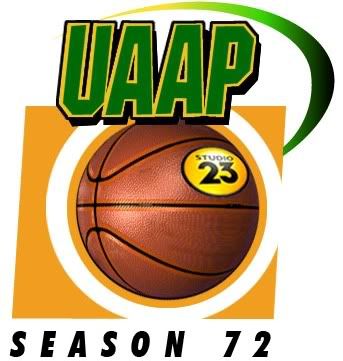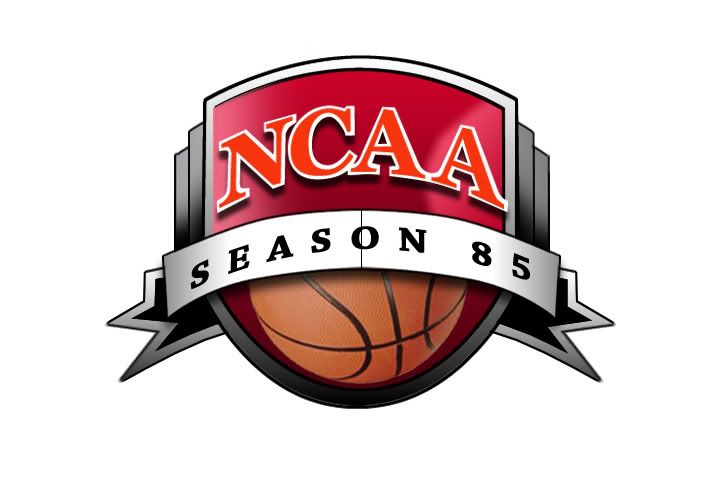“The same way I saw hoops reflected practically everywhere in Manila’s street life, I found the sport embedded in publications stretching back almost eighty years. The basketball Nirvana of my imagination was turning out to be a reality.” - Rafe Bartholomew, “Pacific Rims”
Every time a foreigner comes to the Philippines and asks about sports, basketball has always been the topic of conversation. And unsolicited advice comes in many forms, from a suggestion to be courtside at a Ginebra game, to disbelieving tales of decibel levels at an Ateneo-La Salle finals, to whispers of longing of the old MICAA and national teams before. For the first time, someone has intentionally visited the country with the sole purpose of writing about our unblinking attachment to basketball.
Fulbright scholar Raphael Bartholomew intended to spend a year living in the Philippines to dissect this unusual love between a race of what he calls “40 million men standing five-foot-five” and a sport designed for giants. He ended up immersed in Filipino hoops culture up to his eyebrows for three solid years, and left the country feeling it still wasn’t enough. During that time, the basketball junkie that he already was contracted the same insanity for the sport. The result is a hefty, detailed, and amusing essay called “Pacific Rims”, which will be out next week.
Bartholomew, a former youth baseball player and utility player at a small college in the US, starts the book with an wide-eyed fascination with how Filipinos can play do-or-die style basketball in slippers without ever getting injured, while he had trouble even just walking down the street with them. His odyssey is a basketball fanatics’ fantasy, to spend your life surrounded by the people who continue to build on the sport, and legends who never left it. In the course of his discovery, he also wrote a story about how galvanizing the experience of an Ateneo-La Salle game was, and it became one of the most downloaded stories of the New York Times.
We take for granted that basketball is part of being Filipino, but Rafe has traced it to its very roots, from the time the Americans introduced it as part of their plans for colonization, to the time it supplanted baseball as the youth’s most beloved sport.
“If you want to know where little Pedro is at the sizzling hour of two in the afternoon, amble to the nearest basketball court and there you will find him judiciously throwing a bouncing ball into a hoop.
The ambition of every healthy boy now is to be a basketball player. His hero is no longer the baseballer but the basketballer,” he quotes Sen. Ambrosio Padilla from 1933.”
Bartholomew then dug deep into the golden age of Philippine hoops, when Caloy Loyzaga was king, and the Philippines was dominating the Far Eastern Games so easily, paralleling the early rise of the sport’s parent country.
“Because the United States had introduced basketball to the islands at such an early point in the sport’s history, Filipinos learned to play before the rest of the world,” Bartholomew points out. “The Philippine national team was fine-tuning its game while players in other countries were still studying the rulebook. Filipino teams used their headstart to become one of the most successful countries in early international tournaments.”
Mindful how ethnic diversity, politics, corruption, humor and colonialism color our world in general, Bartholomew paints a candid and (in very Filipino fashion) tongue-in-cheek look at us, and our undying number one sport. His experiences range from tsinelas to isaw to wading through floodwaters, traveling long distances, bearing unbearable heat, to walking the corridors of power and being christened “Paeng Bartolome”. He marvels at how we can put up goals anywhere from fields to streets to mountaintops using makeshift materials, and yet our multi-purpose community centers put even his native New York City public courts to shame. He touches on everything that has made a difference in the exploding lifespan of basketball in this disunited country.
“Basketball was also introduced by a colonial power, but Filipinos seemed to embrace it as their own, and as their national team dominated Asian tournaments and delivered gutsy performances on the world stage, basketball became a source of Philippine pride and a binding agent for the whole archipelago.”
Bartholomew had the good fortune of being led from one perfect source to the next. He marveled at the selfless sharing of those in the basketball commuity, from PBA team owners (he followed the Alaska Aces for one conference) to street vendors, national players from the 1950’s, librarians, and almost everyone he encountered. Everyone, it seemed, cared about him finding out the true story about us and throwing a ball through a rim. He became an adopted Filipino.
The breadth and richness of the subject matter makes it supremely colorful, but that is also what makes it difficult to encompass in one book. Bartholomew’s original fear that the tome would stretch to a thousand pages made it painful to cut down to its heavy 384 pages (more or less). With what we already know (and most of the outside world doesn’t) it is easy to have an opinion about what could have or should have been written about more. You could also complain that there are quite a few American pop culture references, or that he may not exactly understand the nuances of local inferences.
But at the end of the day, that would be nitpicking. Rafe did not just dip his foot into the waters of Philippine basketball: he dove headlong into its mighty contradicting currents, and inhaled deeply.
He has played on the streets with “beermen ballin’ in flip-flops” and traveled with the pros of the PBA. He lived and breathed basketball, flinging himself with abandon wherever this unlikely love affair led him. He manifested the best of intentions, and has given us probably the first true, honest outsider’s understanding of our insane passion for hoops.
It is a meticulous, immersive, touching read that will inspire gratitude from a people who have finally met someone who has sought to understand. And thankfully, gets it.
“Pacific Rims” will be available at National Bookstore, Fully Booked and Powerbooks beginning June 1.
Portable Plants vs. Zombies 1.2.0.1065 Eng
15 years ago














0 comments: